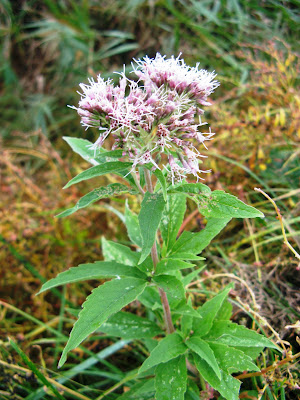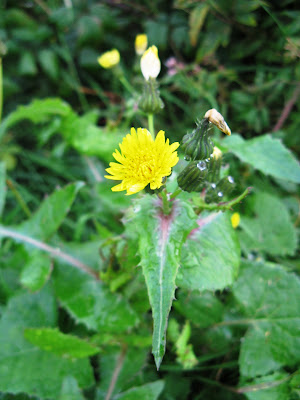









+close+up+North+Gower.jpg)
+Swinton.jpg)













 Many of the same wild flowers seen in the 'Seeing the changes 238' post were evident in a run from Loughor to Penclacwydd. In addition, however, there was also Creeping thistle (Cirsium arvense); Spear thistle (Cirsium vulgare); Smooth sow-thistle (Sonchus oleraceus); Prickly sow-thistle (Sonchus asper); Hemp agrimony (Eupatorium cannabinum); Germander speedwell (Veronica chamaedrys); Scarlet pimpernel (Anagallis arvensis); Herb Robert (Geranium robertianum); Black medick (Medicago lupulina); Redshank (Polygonum persicaria); Traveller's joy (Clematis vitalba); Red campion (Silene dioica); Ramping fumitory (Fumaria capreolata); Japanese knotweed (Reynoutria japonica); Himalayan balsam (Impatiens glandulifera); Common mallow (Malva sylvestris); Gorse (Ulex europaeus); Tufted vetch (Vicia cracca); Meadow vetchling (Lathyrus pratensis); Wood vetch (Vicia sylvatica); Meadow buttercup (Ranunculus acris); Marsh woundwort (Stachys palustris); Red dead nettle (Lamium purpureum) and a white crucifer. Autumnal waxcap toadstools reared their heads and Sweet chestnut (Castanea sativa) deposited presents.
Many of the same wild flowers seen in the 'Seeing the changes 238' post were evident in a run from Loughor to Penclacwydd. In addition, however, there was also Creeping thistle (Cirsium arvense); Spear thistle (Cirsium vulgare); Smooth sow-thistle (Sonchus oleraceus); Prickly sow-thistle (Sonchus asper); Hemp agrimony (Eupatorium cannabinum); Germander speedwell (Veronica chamaedrys); Scarlet pimpernel (Anagallis arvensis); Herb Robert (Geranium robertianum); Black medick (Medicago lupulina); Redshank (Polygonum persicaria); Traveller's joy (Clematis vitalba); Red campion (Silene dioica); Ramping fumitory (Fumaria capreolata); Japanese knotweed (Reynoutria japonica); Himalayan balsam (Impatiens glandulifera); Common mallow (Malva sylvestris); Gorse (Ulex europaeus); Tufted vetch (Vicia cracca); Meadow vetchling (Lathyrus pratensis); Wood vetch (Vicia sylvatica); Meadow buttercup (Ranunculus acris); Marsh woundwort (Stachys palustris); Red dead nettle (Lamium purpureum) and a white crucifer. Autumnal waxcap toadstools reared their heads and Sweet chestnut (Castanea sativa) deposited presents.
%20mating%20NWCW.jpg)


No comments:
Post a Comment